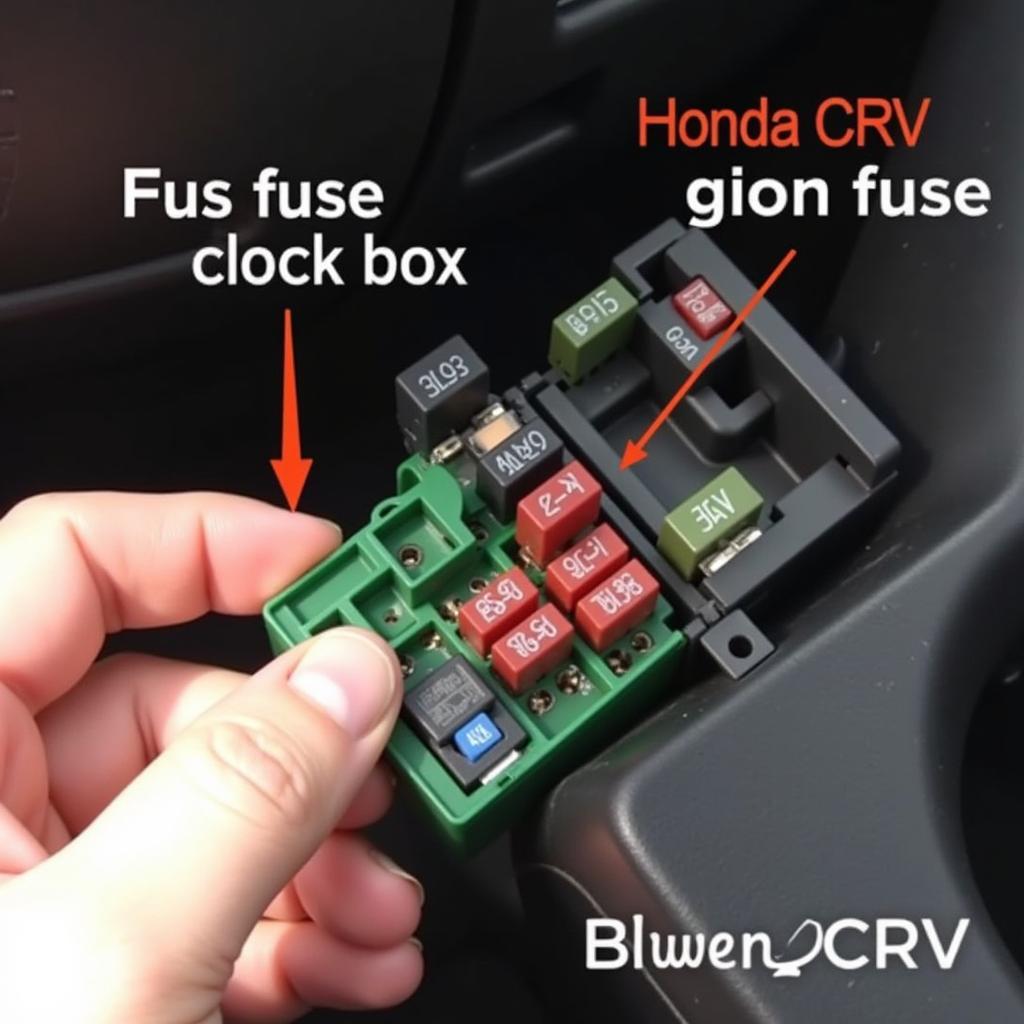Fixing a small leak in your car tire with vulcanizing rubber cement can be a quick, affordable, and effective temporary solution. This guide will walk you through the process, providing expert tips and answering common questions to ensure a successful repair.
Understanding Vulcanizing Rubber Cement and Tire Leaks
Before diving into the repair process, it’s essential to understand what vulcanizing rubber cement is and how it works. This type of cement forms a strong, flexible bond with rubber, effectively sealing small punctures and preventing air loss. It’s a perfect temporary fix, getting you back on the road until you can have the tire professionally repaired or replaced. Remember, while vulcanizing rubber cement is a useful tool, it’s not a permanent solution for all tire damage.
When to Use Vulcanizing Rubber Cement
Vulcanizing rubber cement is ideal for small punctures in the tire tread. Larger holes, sidewall damage, or punctures near the tire bead require professional attention and likely a tire replacement. Using vulcanizing cement in these situations could be unsafe.
How to Fix a Small Leak in Your Car Tire with Vulcanizing Rubber Cement: A Step-by-Step Guide
Here’s a detailed guide on how to fix a small leak in your car tire using vulcanizing rubber cement:
- Safety First: Park your car on a level surface, engage the parking brake, and ensure the area is well-ventilated.
- Locate the Leak: Use soapy water to pinpoint the exact location of the leak. Look for bubbles forming around the puncture.
- Prepare the Tire: Clean the area around the puncture thoroughly with a wire brush or sandpaper. This will ensure proper adhesion of the vulcanizing cement.
- Apply the Cement: Follow the manufacturer’s instructions for applying the vulcanizing rubber cement. Generally, you’ll insert the applicator into the puncture and inject a sufficient amount of cement.
- Reinflate the Tire: Inflate the tire to the recommended pressure.
- Check for Leaks: Reapply soapy water to the repaired area to ensure the leak is sealed.
Important Considerations for Using Vulcanizing Rubber Cement
- Temporary Fix: Remember, this is a temporary fix. You should have the tire professionally inspected and repaired or replaced as soon as possible.
- Tire Type: Vulcanizing rubber cement works best on tubeless tires.
- Puncture Size: This method is only suitable for small punctures in the tire tread.
“Using vulcanizing rubber cement is a great temporary fix for minor tire punctures. It’s easy to use, and can save you time and money in a pinch,” says John Davis, Senior Automotive Technician at Davis Auto Repair.
Maintaining Your Tires for Optimal Performance
Regular tire maintenance is crucial for safe and efficient driving. This includes checking tire pressure regularly, rotating tires as recommended by your vehicle manufacturer, and inspecting tires for wear and tear.
Why Choose Vulcanizing Rubber Cement for Small Tire Repairs?
Vulcanizing rubber cement offers a convenient, cost-effective, and temporary solution for fixing small tire leaks. It’s readily available, easy to apply, and provides a reliable seal until you can get your tire professionally repaired.
“Regular tire maintenance, including checking for and addressing small leaks with solutions like vulcanizing cement, can significantly extend the lifespan of your tires,” adds Sarah Miller, Tire Specialist at Miller Tire & Auto.
Conclusion
Fixing a small leak in your car tire with vulcanizing rubber cement is a valuable skill for any car owner. While it’s a temporary solution, it can get you back on the road safely and quickly. Remember to have the tire professionally inspected and repaired as soon as possible. For further assistance or advice on tire repair and maintenance, feel free to contact us at Autotippro.
AutoTipPro Contact Information:
Phone: +1 (641) 206-8880
Office: 500 N St Mary’s St, San Antonio, TX 78205, United States
FAQ
-
How long does a vulcanizing rubber cement repair last? It’s designed as a temporary fix, ideally lasting until you can get to a tire shop, which should be within 100 miles or so.
-
Can I use vulcanizing rubber cement on a sidewall puncture? No, it’s not recommended. Sidewall punctures require professional repair or tire replacement.
-
What if the leak persists after using vulcanizing cement? The puncture may be too large or the tire may have other damage. Consult a tire professional.
-
Is vulcanizing cement a permanent fix? No, it’s a temporary solution.
-
What are the alternatives to using vulcanizing cement for small leaks? Tire plugs or patches are other temporary options.
-
Where can I buy vulcanizing rubber cement? Most auto parts stores carry it.
-
Is it safe to drive on a tire repaired with vulcanizing cement? Yes, but only for a short distance. Get the tire professionally repaired as soon as possible.





Leave a Reply